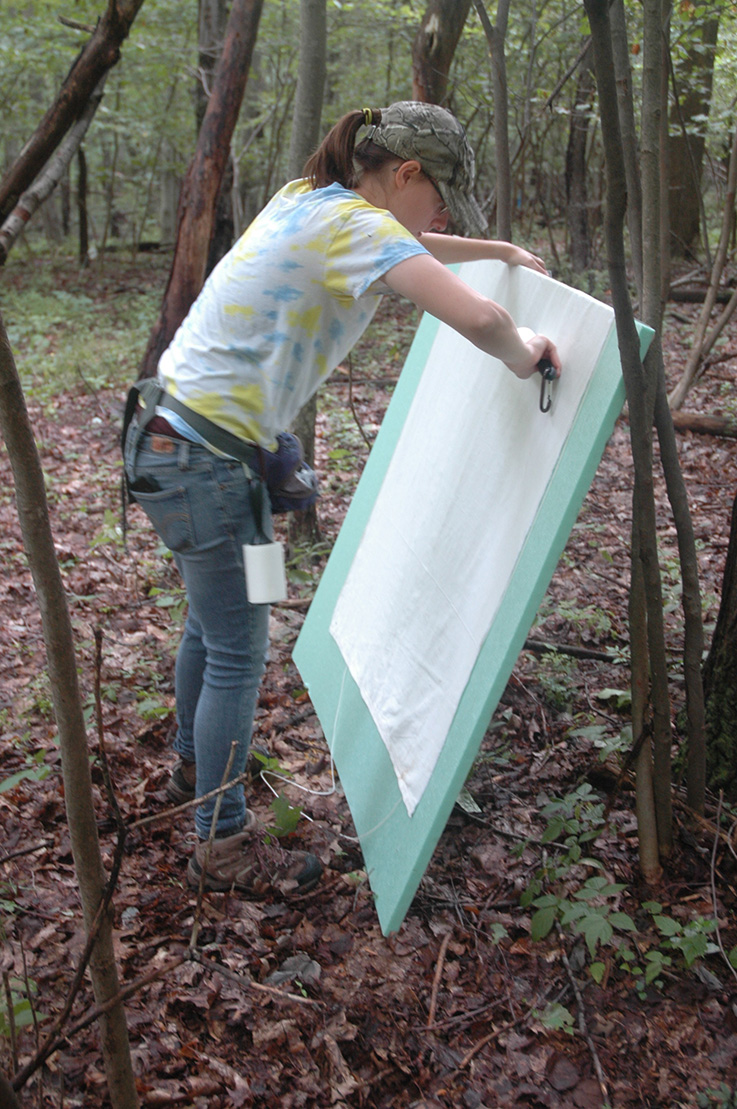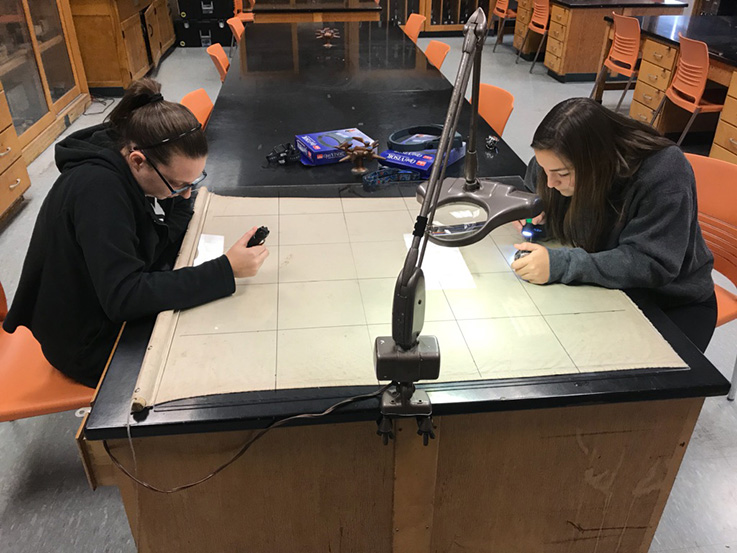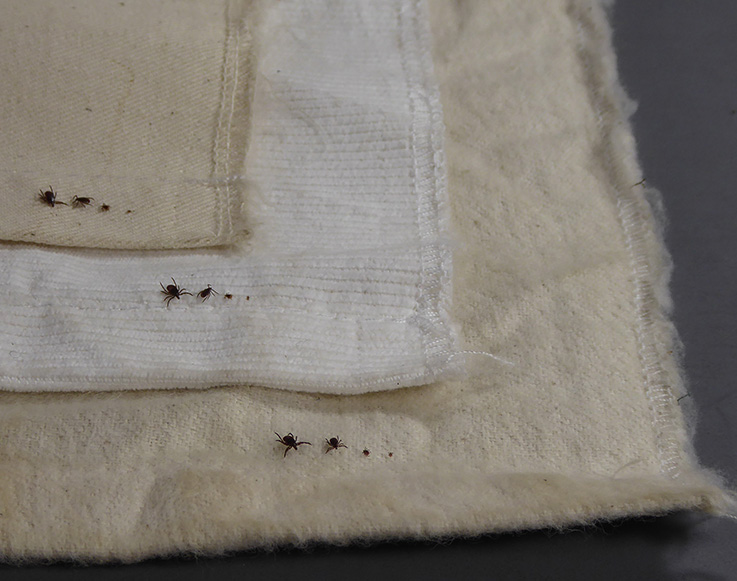Biology majors Emily Welch (MS'19), Anna Manges (BS'20), and Nathan Peters (BS '19) and professors Joe Duchamp and Tom Simmons determined the best fabric for construction of drags used to collect blacklegged ticks which vector the pathogens causing Lyme disease, anaplasmosis, babesiosis, Borrelia miyamotoi disease, ehrlichiosis, and Powassan virus disease.

Emily Welch removing tick larvae from drag in field
The study, "Relative efficiency of drag fabrics for collection of blacklegged tick (Acari: Ixodidae) larvae, nymphs, and adults," is published online ahead of print in the Journal of Medical Entomology.
The preferred method for collection of ticks is to drag a one-square meter piece of sturdy cloth along the ground through and over vegetation. The cloth is attached on its leading edge to a dowel which has a cord tied to its ends for pulling the drag. Unfortunately, this is a very inefficient method for collecting ticks in that most do not attach to the drag and are passed over. Despite the importance of maximizing collection efficiency for surveillance of ticks and tick-borne diseases, the performance of commonly used fabrics has never been compared.
The student-faculty research team compared the relative efficiency of canvas, corduroy, and flannel, which represent a broad range of textures, to collect all active stages of the blacklegged tick. They discovered that flannel was the best fabric for collection of adults and corduroy for collection of larvae and nymphs.

Anna Manges and Emily Welch checking drags for tick larvae in laboratory

Ticks on drag fabrics
Their findings will direct best practices for tick surveillance methods used by public health agencies to assess and reduce tick-borne disease risk.